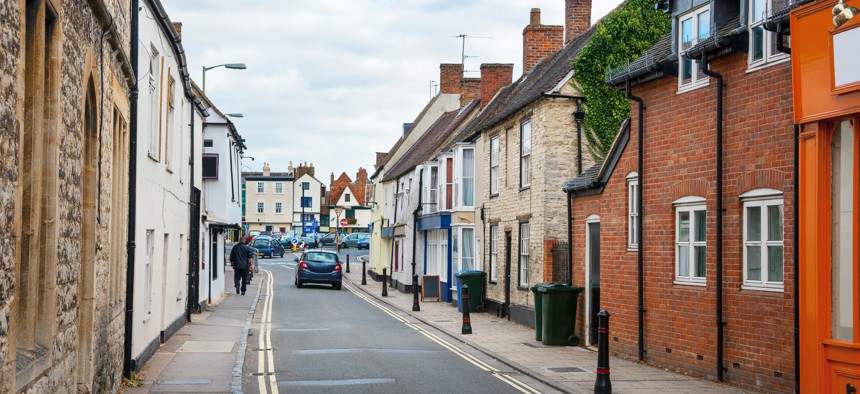Want More Affordable Housing? Try Building Narrower Streets

The report says that many urban streets in Europe, like this one in England, are narrow to accommodate more housing. istockphoto.com/pius99
New research highlights how city streets that are too wide can take up valuable space that could be used to build more homes.
Many U.S. urban residential streets are too wide, constraining population density because too much land is devoted to pavement and not housing, according to a report in the Journal of the American Planning Association.
Street design manuals ignore the fact that the more valuable the land, the narrower the road should be, the report says. “Street space is underused and unpriced, whereas residential and commercial rents and sale prices make many metropolitan regions increasingly unaffordable,” writes the report’s author, Adam Millard-Ball, an associate professor of urban planning at the University of California, Los Angeles.
What To Do
The report makes several recommendations for how local governments can improve this situation:
A street that doesn’t have curbs or sidewalks is an efficient layout for the least-traveled roads. Meanwhile, "yield streets," with a single bidirectional lane and passing places, can be used where volumes are slightly higher.
Trees provide numerous benefits such as shade, but don't require a continuous strip. They can be accommodated by slightly widening the right-of-way at intervals or can be interspersed with parking spaces and other infrastructure.
Local governments can reduce or eliminate street-width requirements in subdivision ordinances, especially on streets with little through traffic, in exchange for more "flexible and holistic design guidelines."
Rather than requiring a land owner to provide a portion of the property for the street, a city could increase inclusionary housing requirements, require some land to be protected as natural habitat, or levy impact fees for contributions to parks, specialized firefighting equipment and public services.
In addition, cities could sell excess rights-of-way to developers in conjunction with a new construction project or cede it in exchange for more affordable housing or community benefits. This could lead to irregular street widths, but varying on-street parking, landscaping and lane widths can add visual interest and calm traffic.
After decades of requiring developers to provide a certain amount of parking, some cities including Buffalo, New York, and San Francisco eliminated the requirement to reduce housing costs and spur the creation of more walkable, mixed-use neighborhoods. "Perhaps the housing crisis in parts of the United States will provide the catalyst to reform an equally damaging practice—minimum street requirements," the report concludes.
For more information on the research click here.
Jean Dimeo is managing editor of Route Fifty.
NEXT STORY: Transit Leaders See New Federal Money as a Bridge, Not the End of the Line





